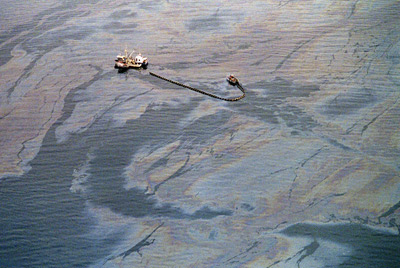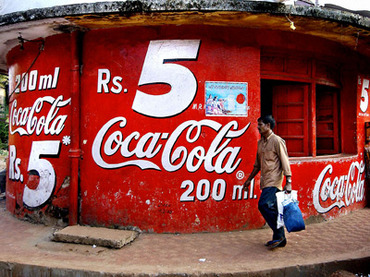Demographic and Environmental Changes
Demographic Change Factors
Technological Advancement and War

Penicillin saved many lives in the 20th century, increasing life expectancy.
The world’s population has been exponentially growing throughout history, significantly increasing in the 20th century. Starting in the year 1900, the world’s population was approximately 1.6 billion, growing to 6 billion by the end of the century. One of the major factors that contributed to this change was the lessening of mortality rates, specifically with advances in technology and medical treatment. The underlying factor for all of these advances were due to globalization, and increased collaboration efforts by scientists around the world, allowing for great increase in discoveries. In the early 1900s, the FDA was created, regulating food and drug safety for the consumers in the U.S. Even today, something that is “FDA Approved” is generally safe to use or consume. This increased the standards of the products that were being made, and set regulations to prevent false advertisement. Penicillin was also discovered by Alexander Fleming in 1928, allowing for the global use of this antibiotic. Syphilis and other diseases that once lead to death, were now being treated with penicillin, decreasing mortality rates in both young and old individuals. CPR was introduced in the mid 1900s; although it was a small development, it still added onto the number of deaths being prevented and was yet another medical advancement. In 1922, it was the first time diabetes was treated with insulin. Even though it was discovered in the 1800s, it was not until the 20th century that scientists used their technology to purify it, and inject it into diabetics, thus preventing patients from dying and increasing their life expectancy. Globalization also helped the Green Revolution, which was a period in which agricultural production was able to increase heavily. New, mass irrigation methods were introduced, pesticides were being used to kill parasitic bugs, and fertilizers like synthetic nitrogen were used for a higher yield and variety in crops. The Green Revolution was so important because it was able to support the growing population in the 20th century. Although there are health risks, the Green Revolution was crucial to prevent a widespread famine that would have ensued in India, China and developing countries. Essentially, it was the backbone for the population growth.
Baby Boom

After the war, soldiers came home and started families.
Before World War II, there was the Great Depression, which had effects on the global scale. People were unemployed and could not feed their families efficiently, leading to a decline in births as families did not want another child to support. There was also a small yet noticeable increase in mortality rates because of hunger and famine. However, this all changed as World War II caused a war time production in many countries like the U.S, giving people jobs, allowing for the increase in population. Western countries that fought in the war specifically were able to benefit from this industrialization, with employment in military and factories. The Baby Boom era after World War 2 was the result of soldiers coming home from war, marrying, and settling down with kids. In the U.S alone, this era brought around 79 million babies, peaking in 1946. Veterans that fought in the war received veteran benefits, allowing them to start new lives with the potential for higher education, jobs, and housing. This demographic change not only affected the population’s numbers, but triggered a higher marriage rate, consumption boom, housing boom, as well as a boom in the labor force. The drastic change in labor force lead to urbanization, and a growing middle class. Several European countries were also affected with the return of soldiers from World War 2, following similar patterns as the U.S. The effects of the Baby Boom can still be seen today, as there are so many senior citizens living. This increase in older people creates a problem for many countries, as they require retirement and pension funds, as well as health care needs. All of these take from the governments attention and spending, which affects nations as a whole.
Environmental Change Factors
Global Warming

Major countries contributions to global warming.
Global warming: The extremely large increase in technological advancements that occurred in the 20th century combined with the lack of knowledge of the effect that these advancements would have on the environment brought about the human influenced change of global warming. Humans played an extremely large role in influencing global warming because of inventions such as the car and the use of fossil fuels and other CFCs. Because the industrial revolution brought about change so quickly, little research was done on the effects that many of the new technologies would have on the environment. Technology in the early to mid 20th century was extremely dirty for the environment, and produced an extremely large amount of carbon dioxide emissions which contributed to the greenhouse effect and deterioration of our ozone layer. One key invention that was highly used throughout the 20th century that many people attribute to the increase in carbon dioxide emissions was the car. When cars run, they release carbon dioxide and nitrous oxide which are both greenhouse gasses. The initial engine designs for cars were extremely ineffective at limiting the amount of greenhouse gasses emitted which resulted in a large quantity of emissions. The destruction of the ozone layer is the key factor in global warming because as the ozone layer disappears, the sun’s rays become more powerful resulting in higher temperatures. The burning of fossil fuels is also a human initiated practice which caused the destruction of our ozone layer and global warming. As primitive water power proved to be an ineffective means to power the large factories that were necessary to meet humans demand for goods, fuels such as coal, oil, and natural gas began to be used. These fuel sources are detrimental to the environment because they also contribute to the greenhouse effect and the destruction of our ozone layer. Finally, the widespread use of CFCs is another practice that resulted in global warming. When CFCs were first used on the market, they were used in an extremely large amount of products from air conditioners, refrigerators and freezers to hair spray and perfumes. The effects that CFCs had on the environment and ozone layer were not known when they were first used. However, it was later discovered that CFCs are highly reactive and play an extremely large role in the destruction of our ozone layer by producing an extremely large amount of chlorine which bonded to other gasses already present which caused holes to develop in the ozone layer.
Evolution of natural disasters As the world begins to advance and new variables are added, many unforeseen problems may arise. Shown in the 20th and 21st century, was the increased frequency and intensity of many natural disasters. Oil spills, landslides, and wildfires all are problems that are facilitated by man’s impact on the world. Offshore drilling and large transportation of petroleum oil is the primary cause for the oil spills which have occurred throughout the last 100 years. Oil spills impact the environment in an extremely large way, causing the death of many animals and the destruction of many of their habitats. Oil is extremely difficult to remove from the environment and the effects of oil spills are often long lasting. The increased amount and intensity of landslides is also another human initiated problem which hurts our environment. In mountainous and forested areas such as South America, the construction of new houses and buildings causes many plants to be uprooted. When combined with the large amount of rain that these areas get, often times the uprooted plants are no longer able to keep the soil stable, and when large amounts of rain occur, little is in place to stop the ground from moving. Landslides are detrimental to the environment because they cover and suffocate other plant and animal life that lie in its way. Finally, the frequency and intensity of wildfires has been greatly increased because of human influence. In dry areas such as California, the increased presence of humans has caused for much more large and devastating wildfires. Humans increase susceptibility of fires by both providing means for fire to move along the land and also by initiating the fires themselves. Before humans had a large influence in these areas, wildfires had very limited ways of starting, primarily by lightning strike on dry grass or plants. However, humans have provided a much easier way for fires to start. Many wildfires in the 20th and 21st century have begun because of either careless campground fires or people improperly disposing of unextinguished cigarettes. Humans also cause for worse wildfires because they make it easier for fires to move because of the construction of homes and other flammable buildings. Many fires are able to spread quickly because houses are in such close proximity with each other, which makes it much more difficult for the fires to be contained and extinguished. Wildfires can be devastating to the environment. Although natural wildfires have benefits because they allow new plant life to grow, the increased frequency of fires because of human influence does not allow enough time for the new plant life to grow, resulting in the destruction of many animal habitats.
|
Globalization: The Good and The Bad
Globalization is not a new emergence. In fact it has been present for thousands of years, starting with the Silk Road, a trade route in which goods were passed through a network that included East, West and Southern Asian along with the Mediterranean and European world. This network allowed people from all over the world to gain new products and come in contact with new ways of thinking. Although over time technology has made this trading easier, the exchange of products and ideas is still present.
Economic Globalization
Economic globalization is the interdependence of nations through international trade, multinational corporations and free trade. All of this is only possible though the lowering of trade barriers to encourage growth in trade and joint ventures to occur between countries. Most companies are no longer solely based in one region but rather are scattered throughout many different regions of the world. This further allows countries to market their products to many different people. Economic globalization is not just positive for businesses, but also offers many opportunities for people as they are given the chance to work at businesses which have established themselves in these people’s countries. Economic globalization also benefits consumers as they are given a larger amount of goods and services to choose from while pushing businesses to create products for the cheapest price. Lastly, economic globalization lets countries focus on their area of expertise while gaining the products they need from countries whose focus is on producing these goods. For example, China is well known for its steel production while Britain is well known for its computer manufacturing. Instead of both of these countries trying to produce steel and computer parts, economic globalization allows them to focus on one of these products while relying on trade to obtain the other product.
______________________________________________________________________________________________________________________________________________________
Globalization and the Risks
While economic globalization can help a nation grow and become stronger, this does not benefit everyone equally, as some people will gain wealth, while others will become poorer. Countries that have experienced economic growth on a large scale, such as China, now have to deal with the danger of having a very large gap between the wealthy and the poor. In a Pew poll conducted in China, 51% of people said that this large gap is one of two top dangers that China is facing. There is also a growing belief that the government must help those who cannot help themselves, so although countries may support economic globalization, the gap between the wealthy and the poor is causing many to rethink laissez-faire ideology and lean towards a system in which the government is heavily involved. And it’s not just the gap between the wealthy and poor that has many concerned, but the fact that many smaller countries do not have the strength or resources to compete internationally and may eventually be completely put out of business by the larger countries. As countries become more and more interdependent on one another economically there is an increased risk as to what will happen if one of these countries’ economies begins to fail. This danger can be clearly seen in 2010 when Greece suffered an economic failure and then Spain, being so close in proximity, began to have economic problems until soon enough, many countries were dealing with economic difficulties. So the fact that countries are so reliant on one another does not come without risks because if one country begins to fail, just like the domino theory, other countries will follow suit.
It is also widely believed that globalization offers more people jobs. While this is partially true, it is important to recognize that many companies are moving their businesses to other countries where the work is cheap and this leaves many people living in industrialized countries out of work. Lastly, since globalization, diseases have been spreading. A recent disease affecting millions and million of people is HIV/AIDS. It is believed that HIV/AIDS started in animals and soon made its way to people. While this disease stayed contained for some time within certain groups of people, the increase of human interaction in the past years has caused this disease to spread rapidly. It is now believed that over 34 million people are HIV positive or are living with AIDS. While some countries have taken a great initiative to help bring awareness to this disease in the hopes of slowing its spreading, it continues to multiply because of globalization.
It is also widely believed that globalization offers more people jobs. While this is partially true, it is important to recognize that many companies are moving their businesses to other countries where the work is cheap and this leaves many people living in industrialized countries out of work. Lastly, since globalization, diseases have been spreading. A recent disease affecting millions and million of people is HIV/AIDS. It is believed that HIV/AIDS started in animals and soon made its way to people. While this disease stayed contained for some time within certain groups of people, the increase of human interaction in the past years has caused this disease to spread rapidly. It is now believed that over 34 million people are HIV positive or are living with AIDS. While some countries have taken a great initiative to help bring awareness to this disease in the hopes of slowing its spreading, it continues to multiply because of globalization.
______________________________________________________________________________________________________________________________________________________
Americanization
The end of the cold war signified that the US was now militarily dominant over any other country. This dominance allowed America to refuse many international policies such as the Kyoto Protocol or the doctrine of preemptive war. However, while the US was able to refuse these things, this refusal has caused many countries to greatly oppose American power and influence. Many countries see globalization as “Americanization”; the spreading of American music, food, movies, technology, politics and business techniques. While America is not an empire, the United States seeks to put economic pressure, political pressure, and sometimes even military pressure on countries, seeking to force them to conform to American values. While America does offer benefits such as freedom, they are focused on spreading their empire of production even if that means using force. McDonald's is often viewed as the face of Americanization and rightly so; it’s now in over 100 countries, including Pakistan. While countries like India have integrated a Western culture into their own, some countries refuse to adopt any American culture. Many countries try to fight globalization with acts of terrorism, while others, such as France, have created laws that limit how much English music can be played on the public radio. Either way, while countries believe globalization to be a good force, the Western culture, symbolized by Coke's and Starbucks’ logos, is still feared.
Works Cited
"AIDS in Africa." Wikipedia. Wikimedia Foundation, 05 Feb. 2013. Web. 05 May 2013. <http://en.wikipedia.org/wiki/HIV/AIDS_in_Africa>.
"Americanization." Wikipedia. Wikimedia Foundation, 30 Apr. 2013. Web. 05 May 2013. <http://en.wikipedia.org/wiki/Americanization>.
Armstrong, Monty. Cracking the AP World History Exam. New York: Random House, 2013. Print.
"Assessing Globalization." Pew Global Attitudes Project RSS. N.p., n.d. Web. 05 May 2013. <http://www.pewglobal.org/2008/06/24/assessing-globalization/>.
"English-Online." Globalization. N.p., n.d. Web. 05 May 2013. <http://www.english-online.at/economy/globalization/advantages-and-disadvantages-of-globalization.htm>.
"Global Warming." Wikipedia. Wikimedia Foundation, 05 Apr. 2013. Web. 05 May 2013.
"How Many Countries Sell Coca‑Cola? And Is There Anywhere in the World That Doesn't Sell It?" Coca-Cola. N.p., n.d. Web. 05 May 2013.
Strayer, Robert W. Ways of the World: A Brief Global History. Boston, MA: Bedford/St. Martin's, 2009. Print.
"Americanization." Wikipedia. Wikimedia Foundation, 30 Apr. 2013. Web. 05 May 2013. <http://en.wikipedia.org/wiki/Americanization>.
Armstrong, Monty. Cracking the AP World History Exam. New York: Random House, 2013. Print.
"Assessing Globalization." Pew Global Attitudes Project RSS. N.p., n.d. Web. 05 May 2013. <http://www.pewglobal.org/2008/06/24/assessing-globalization/>.
"English-Online." Globalization. N.p., n.d. Web. 05 May 2013. <http://www.english-online.at/economy/globalization/advantages-and-disadvantages-of-globalization.htm>.
"Global Warming." Wikipedia. Wikimedia Foundation, 05 Apr. 2013. Web. 05 May 2013.
"How Many Countries Sell Coca‑Cola? And Is There Anywhere in the World That Doesn't Sell It?" Coca-Cola. N.p., n.d. Web. 05 May 2013.
Strayer, Robert W. Ways of the World: A Brief Global History. Boston, MA: Bedford/St. Martin's, 2009. Print.








